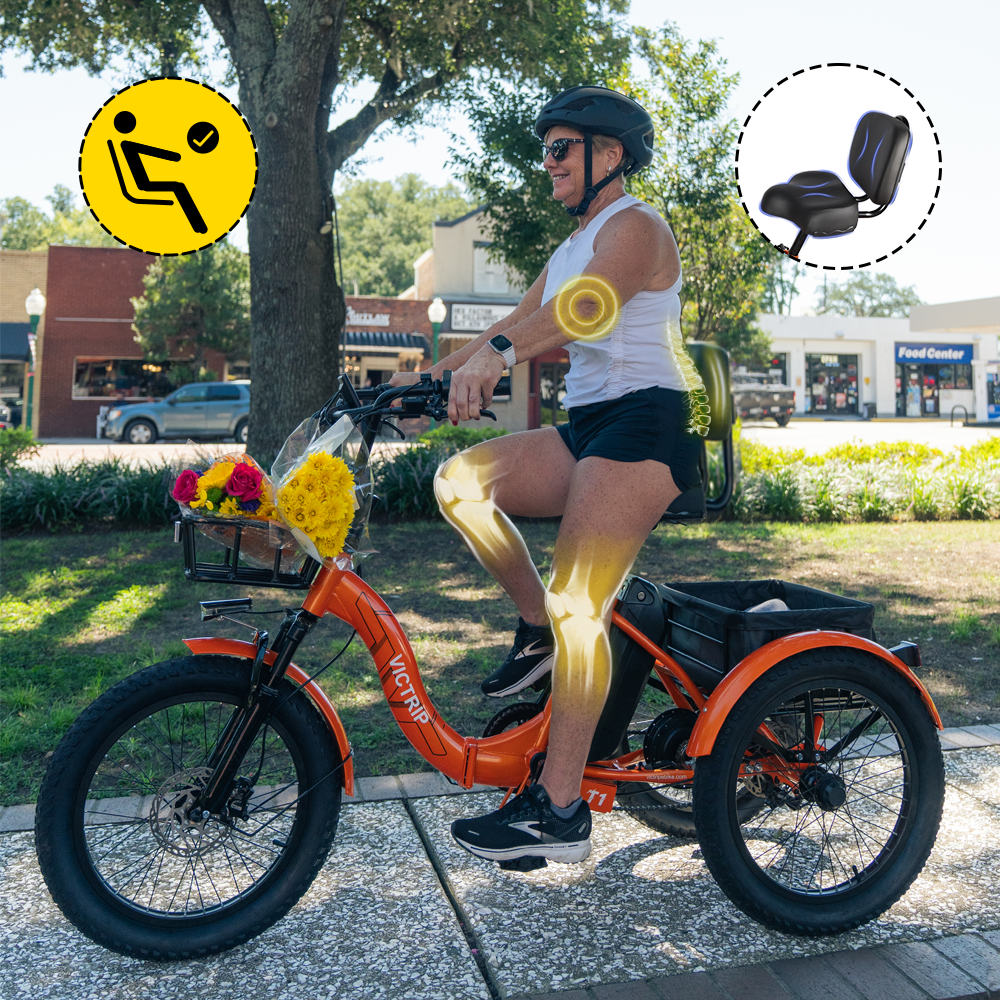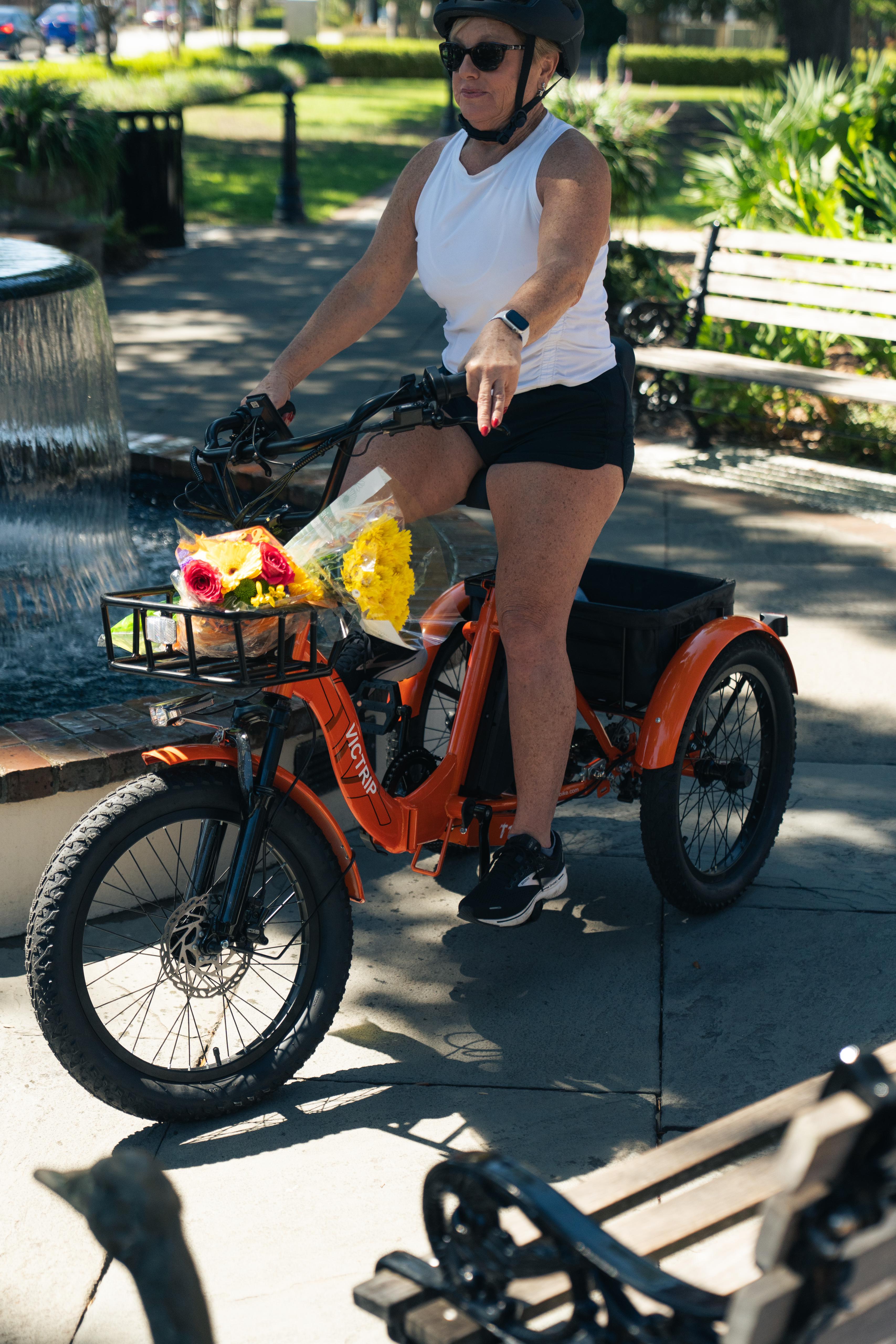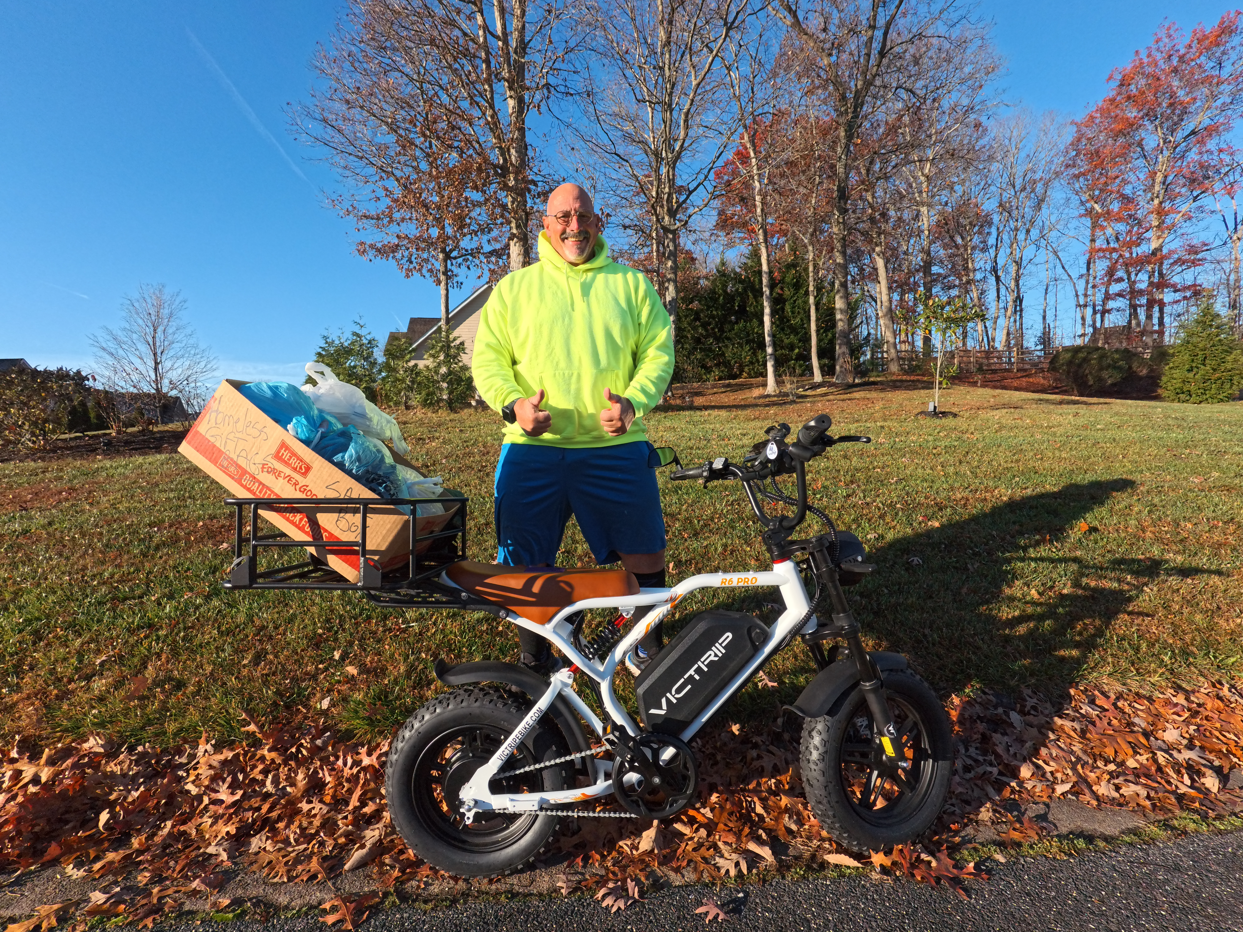
Electric bikes (or e-bikes) have exploded in popularity, and with good reason. They provide a powerful, eco-friendly way to get around, whether you're commuting downtown or climbing rugged mountain trails. But all e-bikes aren't created equal. The two main categories—city e-bikes and mountain e-bikes—serve very different purposes, and choosing the wrong type can seriously hinder your experience.
-
City e-bikes are optimized for pavement, commuting, and urban mobility.
-
Mountain e-bikes (eMTBs) are built for trails, elevation changes, and technical terrain.
Before purchasing, understanding the core differences in design, performance, and usability is key. Let’s explore.
Intended Use: Where Do You Ride Most?
When it comes to choosing the right e-bike, ask yourself: Where will I spend most of my time riding?
City E-Bikes:
-
Best for urban commuting, paved bike paths, and neighborhood cruising.
-
Ideal for stop-and-go traffic and short to medium distances.
-
Integrated features like lights, fenders, and racks cater to daily commuters.
If you're seeking a premium city e-bike, the VICTRIP TITAN S is an outstanding choice.
It features:
-
A lightweight step-through frame for easy mounting,
-
A powerful 5500W rear hub motor ideal for city streets,
-
Suspension fork for comfort over curbs and cracks,
-
And a high-capacity LG battery offering up to 180 miles of range.
Designed with urban mobility in mind, the TITAN S makes every ride smoother, safer, and more stylish.
Mountain E-Bikes:
-
Engineered for off-road trails, hills, rocky paths, and muddy terrain.
-
Great for adventure seekers and riders who want a workout in nature.
-
Often lack commuting features but excel in durability and performance.
Pro Tip: If 80% or more of your riding is on roads or paths, a city e-bike is your best bet. If you're frequently hitting trails or exploring wild terrain, a mountain e-bike will shine.
Frame Design and Geometry Differences
The frame geometry dramatically affects comfort, control, and ride feel.
City E-Bikes:
-
Feature upright geometry for better visibility and comfort.
-
Typically have step-through frames for easy mounting/dismounting.
-
Lightweight aluminum or alloy frames improve agility.
Mountain E-Bikes:
-
Sport aggressive, sloped geometries for better control on steep declines.
-
Top-tube designs promote stiffness and power transmission.
-
Reinforced frames made of aluminum, carbon fiber, or steel for shock resistance.
| Feature | City E-Bike | Mountain E-Bike |
|---|---|---|
| Frame Style | Step-through, upright | Top-tube, sloped |
| Ride Posture | Upright | Forward-leaning |
| Weight | Lightweight | Heavier due to suspension |
Motor Placement and Power Capabilities
Motor placement is critical in determining power delivery and control.
City E-Bikes:
-
Mostly use hub-drive motors (in the rear wheel).
-
Provide smooth acceleration and are cheaper to maintain.
-
Typical power: 250W to 500W.
Mountain E-Bikes:
-
Use mid-drive motors mounted near the pedals for better torque.
-
Offer superior climbing ability and weight distribution.
-
Power output: 500W to 750W+ with higher torque ratings.
In short: Mid-drive motors are better for hilly and off-road terrain, while hub drives work well in flat, urban environments.
Battery Range and Charging Speed
Battery performance can vary depending on terrain, rider weight, and motor usage.
City E-Bikes:
-
Average range: 25–50 miles per charge.
-
Efficient power usage due to smoother terrain.
-
Typically faster charging (3–4 hours).
Mountain E-Bikes:
-
Average range: 20–40 miles, depending on climb intensity.
-
Battery drains faster due to steep inclines and trail resistance.
-
Larger batteries often take 4–6 hours to fully charge.
💡 Look for high-capacity LG or Samsung cells like those used in VICTRIP SURNAT N12 for reliable and long-lasting performance.
The VICTRIP SURNAT N12 is a high-performance mountain e-bike designed specifically for off-road enthusiasts.
-
2000W powerful mid-drive motor
-
High-capacity LG battery (up to 80 miles)
-
Hydraulic disc brakes for maximum control
-
Full suspension for superior terrain absorption
Whether tackling forest trails or climbing steep gravel roads, the VICTRIP SURNAT N12 exemplifies the rugged capability and endurance of a mountain e-bike.
TOP PICK

VICTRIP®SURNAT N12 2000W Electric Bike
Suspension and Comfort Levels
Suspension plays a key role in smoothing out bumps and jolts.
City E-Bikes:
-
May feature rigid forks or light front suspension.
-
Prioritize comfort over technical terrain absorption.
-
Best for flat roads and minor bumps.
Mountain E-Bikes:
-
Equipped with full suspension or hardtail setups.
-
Can absorb rocks, roots, and jumps.
-
Offer superior comfort on uneven surfaces.
| Type | Front Suspension | Full Suspension |
|---|---|---|
| City E-Bike | Optional | Rare |
| Mountain E-Bike | Standard | Common |
Tire Types and Terrain Compatibility
The tires on your e-bike dictate how it grips and handles different surfaces.
City E-Bikes:
-
Use slick or semi-slick tires for reduced rolling resistance.
-
Typically narrower (1.5–2 inches) for speed and efficiency.
Mountain E-Bikes:
-
Feature knobby, wide tires for traction on dirt, gravel, and mud.
-
Sizes range from 2.3–2.8 inches or more for shock absorption.
If you need a bike to handle both city and light trail rides, consider hybrid tires or modular setups.
Gearing and Transmission Systems
City E-Bikes:
-
Often use internal gear hubs or single-speed systems.
-
Simpler, cleaner, and lower maintenance.
Mountain E-Bikes:
-
Require wide-range gearing for steep climbs and varied terrain.
-
Typically use 10-12-speed derailleur systems for precision.
Portability and Storage
City E-Bikes:
-
Often foldable or compact to fit in apartments and public transport.
-
Easier to carry upstairs or load into cars.
Mountain E-Bikes:
-
Larger frames, bulkier tires, and suspension systems make them harder to store or transport.
-
Better suited for garage storage or dedicated bike racks.
Cost Comparison: Value for Your Investment
-
City e-bikes: Start around $1,000–$2,500
-
Mountain e-bikes: Range from $2,000–$6,000+
The advanced suspension, rugged frame, and powerful motors of mountain e-bikes justify their higher price. However, if your needs are mostly urban, city e-bikes provide excellent bang for your buck.
Safety Features and Accessories
City e-bikes usually come with:
-
Integrated lights
-
Fenders
-
Rear racks
-
Kickstands
Mountain e-bikes may lack these due to their outdoor-focused design but often include:
-
Dropper seatposts
-
Trail-ready disc brakes
-
Aggressive tire treads for better grip
Maintenance Requirements and Durability
City E-Bikes:
-
Require less frequent maintenance.
-
Urban riding produces minimal wear and tear.
Mountain E-Bikes:
-
Need more regular maintenance due to rough terrain.
-
Suspension, drivetrain, and tires need constant checks.
Environmental Impact & Sustainability
Both types of e-bikes contribute to reducing emissions, but mountain e-bikes tend to have:
-
Larger carbon footprints due to more materials and motor size.
-
More waste over time from trail abuse and frequent parts replacement.
City e-bikes are more energy-efficient and practical for replacing car usage in urban environments.
Personal Preferences and Lifestyle Considerations
Choose a city e-bike if you:
-
Live in an urban or suburban area
-
Want daily transportation with minimal effort
-
Prefer comfort, simplicity, and efficiency
Choose a mountain e-bike if you:
-
Love adventure and trail riding
-
Want high performance and power
-
Need a bike that can take a beating
Final Verdict: Which E-Bike Should You Choose?
If your goal is urban commuting, a city e-bike offers more comfort, affordability, and practical features. But if your weekends revolve around trail adventures, a mountain e-bike like the VICTRIP Ebikes delivers unmatched performance and rugged power.
Choosing the right e-bike isn't just about specs—it's about your lifestyle, terrain, and goals. Identify those clearly, and the right choice will emerge naturally.
FAQs
Can I use a mountain e-bike in the city?
Yes, but it may be overkill. The extra suspension and aggressive tires may feel sluggish on pavement.
Is a city e-bike okay for light trails?
Some city e-bikes can handle packed dirt paths, but they’re not built for rugged or technical terrain.
Which is faster, a city or mountain e-bike?
City e-bikes are typically faster on pavement due to lighter frames and less rolling resistance.
Do mountain e-bikes last longer?
They’re built to withstand tough conditions, but their parts may wear faster due to intense use.
How do I choose the right e-bike?
Start with your terrain, then match features to your riding habits. Urban riders should favor comfort; trail riders need performance.




Share:
Best Off Road E Bike Perfectly Sized for Tall Riders
Back to School: Best Transportation Tools